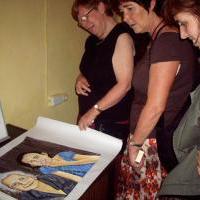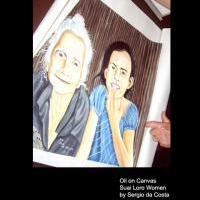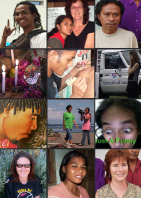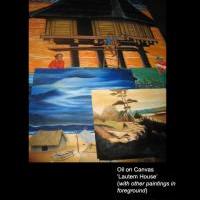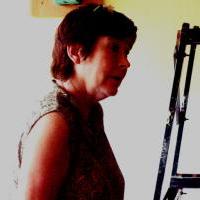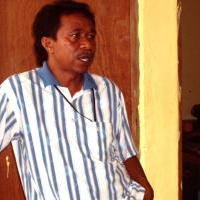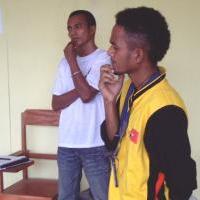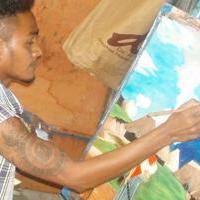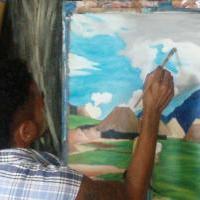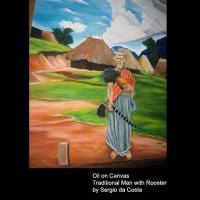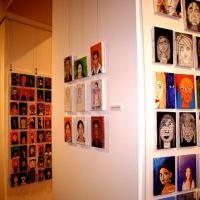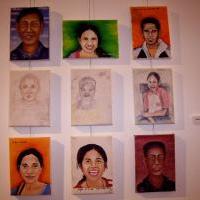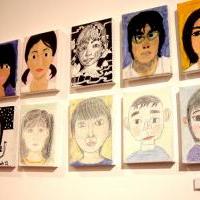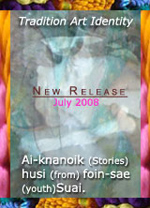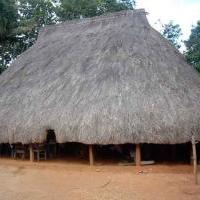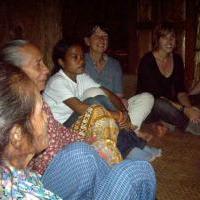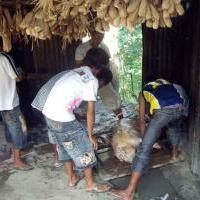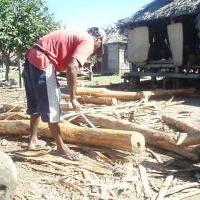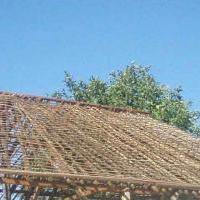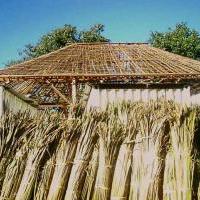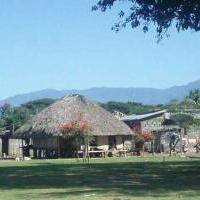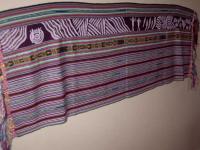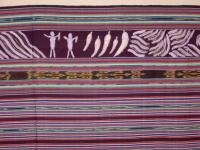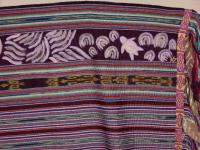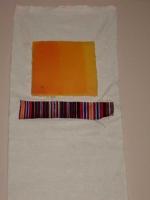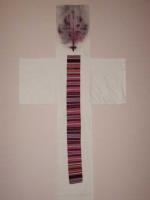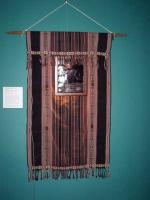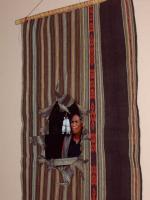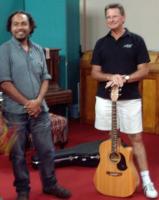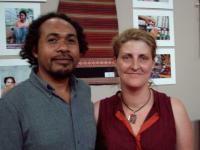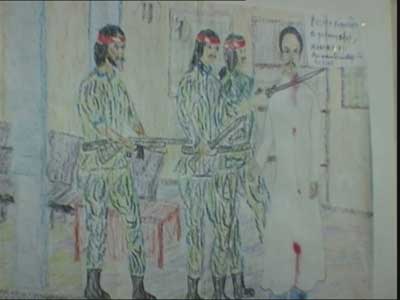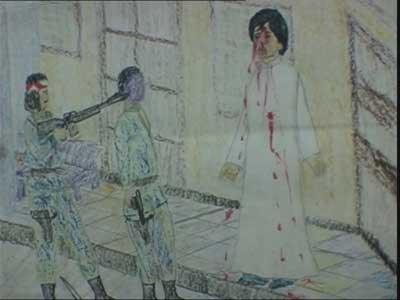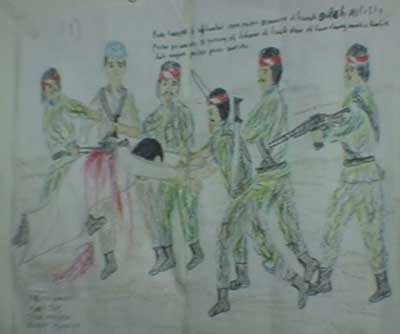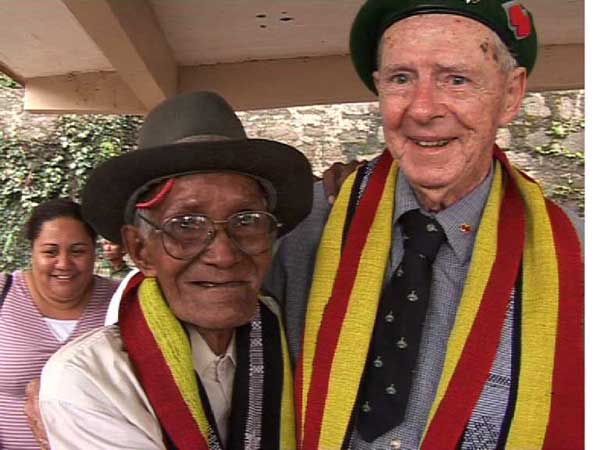
‘Recollections of a Criado’ all Episodes
Rufino and Ron Archer (Photo: 2006) Both men were members of 2/2nd Company ‘Sparrow Force’
I had heard about the work of these young boys called ‘criados’ and I was curious about the meaning of the word’ criado’ from the first moment I heard it. I knew they were young boys because I had seen this photograph of them. In this photograph – Barana the criado for Archie Campbell – a member of 2/2nd Company who wrote his memoir – looks like a teenager and Mau Morni looks between 10 and 13 or 14. Naibilli appears to be about 8 or 9 years old.
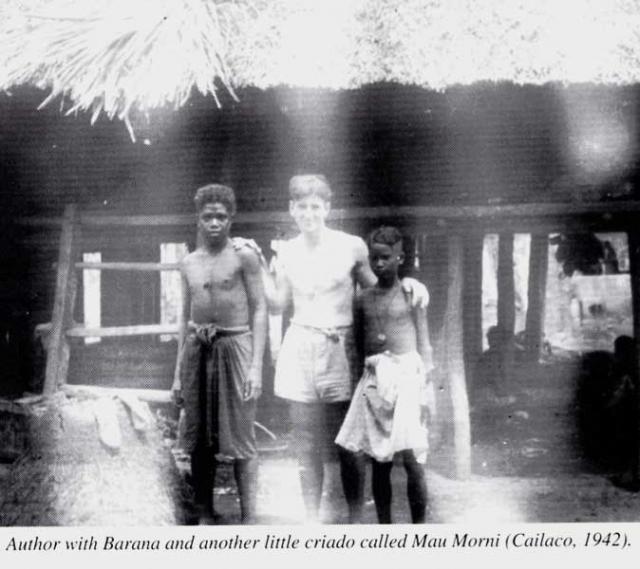
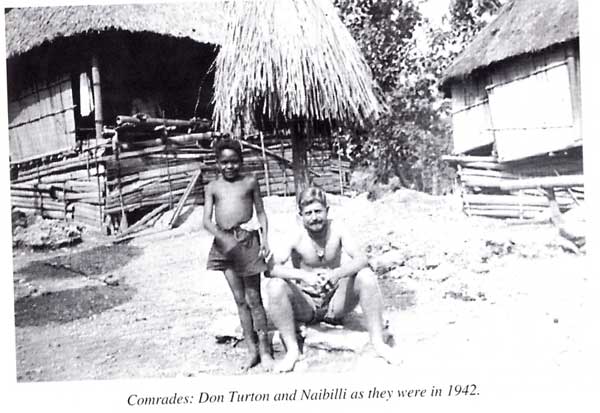
Barana, Archie Campbell & Mau Morni Cailaco, 1942 Don Turton & Naibilli 1942
(Source: The Double Reds of Timor Archie Campbell, 1995)
‘criado’: “little mate” – “brother” – “servant”?
I always wondered why this Portuguese word was used by Australians who are not renowned for their linguistic skills! Was it a word of endearment or praise? People seemed to love to say it, it seemed always to be embued with a fraction of awe and affection or simply mystery, by Australians who used it. When I learned it meant ‘servant’ I was shocked.
Everybody knows what that means but it conflicted with the impression I had been getting. Everywhere the relationship is described as involving closeness and Australian ‘mateship’. The word ‘love’ is rarely used because Australian men, especially soldiers of that generation don’t throw the ‘love’ word around much for fear of appearing ’emotional’ or vulnerable. However, Archie Campbell uses this word when describing his relationship with Barana and tears and strong feelings always abound in descriptions of departures and reunions between these men, and departures and reunions seemed to characterise their relationships. This excerpt from Archie Campbell’s memoir about his reunion with Barana is a good example:
“We rushed toward each other, and thirty long years vanished in one priceless instant of Timor magic. Our eyes were full of tears, and we hugged each other as if to be sure that each of us was real…Once again I was standing beside my wonderful, loyal, loveable Barana. It was like a dream come true, yet more than that: it was incredible – a miracle of miracles!”
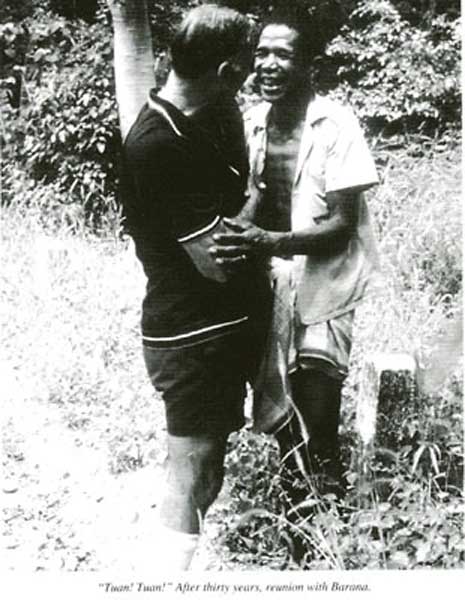
Archie Campbell’s reunion with Barana
In his stories Rufino refers often to Tom Nisbet as his ‘Patron’. This word implies somebody who looks after you and sponsors you and this is in accord with the soldiers’ role following the War. Many Australian veterans of Timor sent money to the Timorese who helped them and Tom Nisbet was one of these. Rufino is a very polite and respectful old man, also a man of his generation. He grew up in the colonial world of the Portuguese and has spent the last thirty-five years of his life surviving the Indonesian occupation. The word patron is imbued with the respect of somebody grateful to another for their sponsorship, and this is clear in Rufino’s recollection of his response to receiving news of Tom Nisbet’s death..
Tom Nisbet’s 2/2nd Company were the first to land in East Timor in December 1941. According to Patsy Thatcher, who recorded the stories of all the 2/2nd Company known as ‘Sparrow Force’, for these men, ‘criado’ meant their “little mate”. Patsy also told me many Timorese were paid by the Australian Army for work they did, but the criados were not paid. Presumably because they were boys and they were not working in any ‘official’ capacity. Rufino seemed pleased with bits and pieces of money given to him by Nisbet, money found in his pockets. The men were without much cash until they established radio contact with Australia six months after the Japanese Landing and an air drop of money and other supplies was made.
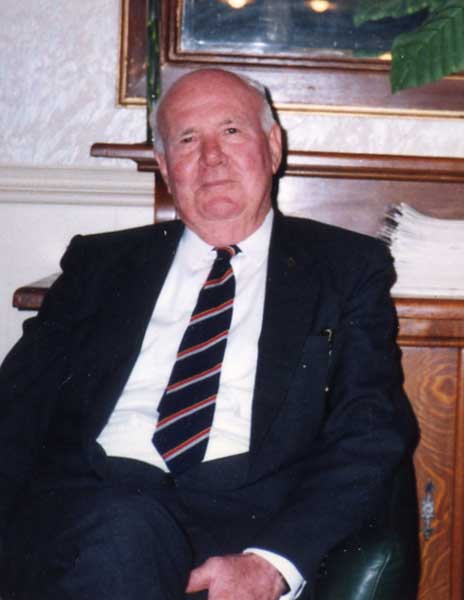
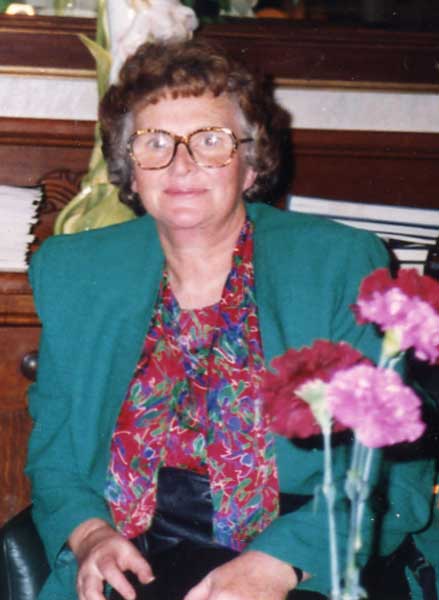
Tom Nisbet & Patsy Thatcher (Photo: 1993.)
When is a history a history?
What is also said over and over again is that the Australians owed their lives to the Timorese and that leaving them in Betano was one of the most difficult things they ever did in their lives. But how did these young boys come to leave their families and work for the Australian soldiers at great risk to their lives and that of their families? At this point there are more questions than answers.
These recollections of WW2 in East Timor will not end here. It may become a new beginning or it may be too late. These stories are not deeply researched, or corroborated they are simply Rufino’s recollections. The written history of WW2 in East Timor published by the 2/2nd Commando Association ‘All the Bull’s Men’ relies mainly on personal accounts from the men of 2/2nd. The official history revolves around the official documentation of meetings and also personal accounts and some of these men spent decades doing their research and writing their memoirs. But the Timorese experience has not been documented in a volume.
Many Timorese worked for the Australians in East Timor during their time there doing a variety of tasks: building, educating them in language and culture, cooking, providing food, nursing them, informing them, guiding and so forth. According to one account from Rufino they sometimes helped them set up traps for the Japanese. But, they were not all ‘criados’. How many criados there were I haven’t discovered, Rufino says over a thousand, others say more like three hundred to three hundred and fifty, but there seems to be general agreement Rufino is the last ‘criado’ alive.
According to the personal accounts of the soldiers ‘criados’ attached themselves to Australian soldiers. By his own testimony Rufino didn’t go along with Lt. Nisbet of his own accord. Most of the criados were young children or teenagers and according to Rufino his father was left to discover where he was, and at one point he ran away and was pursued and brought back. What age the boys were seems to be controversial for a number of reasons, but it’s clear from photographs, some at least were pretty young. In my interview Rufino says he was 11 years old twice and nine years old once. Other older Timorese I know have no idea of their age either. Once again according to Patsy Thatcher Paddy Keneally claims he saw Rufino’s Baptism certificate which placed his birth in 1917. This seems impossible, it would be more likely to be 1927 that would put him at about the right age as he appears now, 81. That would make him 15 in 1942! Join the ranks of the confused.
Who died at Betano?
Rufino tells a story of how all the other criados died at Betano when Tom Nisbet and the rest of 2/2nd Company left East Timor in 1942. When we checked and re-checked this with him he was adamant. Australians are positive the story of this massacre is not true because we would have heard about it by now. Tom Nisbet made three or four visits to East Timor and at times searches were made for criados. We can probably be pretty confident Rufino lives with the idea the boys he left behind were all killed. Whether he has always believed this or not, at this point we don’t know. Perhaps this story will help flush out some more Timorese relatives of criados and others who worked for the Australians or who live near Betano who know these stories.
The 2/2nd Association built a swimming pool in Dare at the base of the mountains above Dili as a practical memorial site for the Timorese who served them in 1942 and it was opened in 1969. It is well known that many of the Australians reunited with their criados in 1969 at that event. It is likely there are photographs of this event in family albums too. If anyone knows of these we would love to post these on suaimediaspace.
This photograph testifies to the fact that Barana, Archie Campbell’s criado survived until at least 1973.
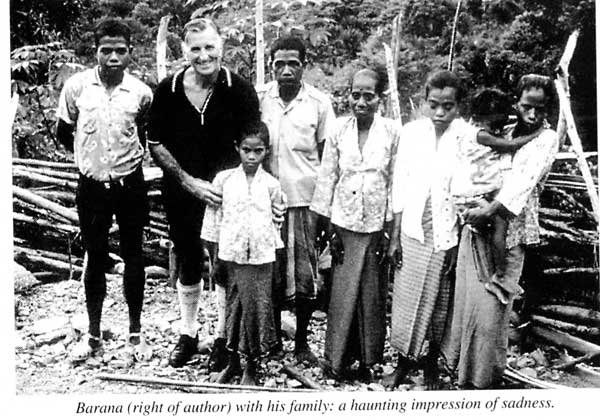
Archie Campbell’s reunion with Barana & his family 1973.
{Source: Archie’s Autobiography the Double Reds of Timor (Published by ‘John Burridge Military Antiques’ 1995. Out of Print.)}
It is said 40,000 Timorese died in WW2. Many criados were killed by the Japanese for fraternising with the Australians. According to soldiers’ testimony nobody from the 2/2nd Company was ever betrayed by Timorese. However 2/4th Company who exchanged places with them at Betano in December 1942 suffered a different fate. By this time the Japanese began killing Liurai, (roughly translates as Chief or King), to entice betrayals and flush out the Australians. Many criados who survived until 1975 were sought after and killed by the Indonesian Military. It’s presumed this was done, to ensure any arms or skills they may have had were removed. The presence of the Japanese in East Timor also led to Allied aircraft returning from sorties in the region emptying their remaining bomb loads over East Timor.
Hopefully in the future some young Timorese will chase down the relatives of the boys for Timorese history of this time. Rufino’s recollections are those of a very old man who has had limited access to others who shared his experiences over the years, meaning corroboration and consolidation of his narratives has been very limited. Rufino has also had to endure the occupation of the Indonesian Military and the loss of three of his children at the Santa Cruz massacre. The episodes provided here, which have been extracted from an interview with him provide a rare insight to the memories and stories of a man whose humour and dignity are enviable. We guess from reportage and Rufino’s own estimates, that he is between 77 and 89!
Names & spellings of places in the video interview have been checked by Patsy Thatcher & Balthasar Kehi using Portuguese map published by Junta de Investigacoes do Ultramar and ‘Maps in ‘East Timor A Country at the Crossroads of Asia and the Pacific’. 2002. Silkworm Books. Discrepancies in spellings in documentation can be explained to some extent by changes in Language in the country and English spellings imposed by English speakers. Australian versions of these stories have been checked in The Australian Memorial History and ‘All the Bull’s Men’, Cyril Ayris. April 2006. Published by 2/2nd Commando Association.
‘All the Bull’s Men’ is still available and it has a bibliography in the back. Printer PK Print Pty Ltd. 61-08-933603800 jobs@pkprint.com.au
Jen Hughes
